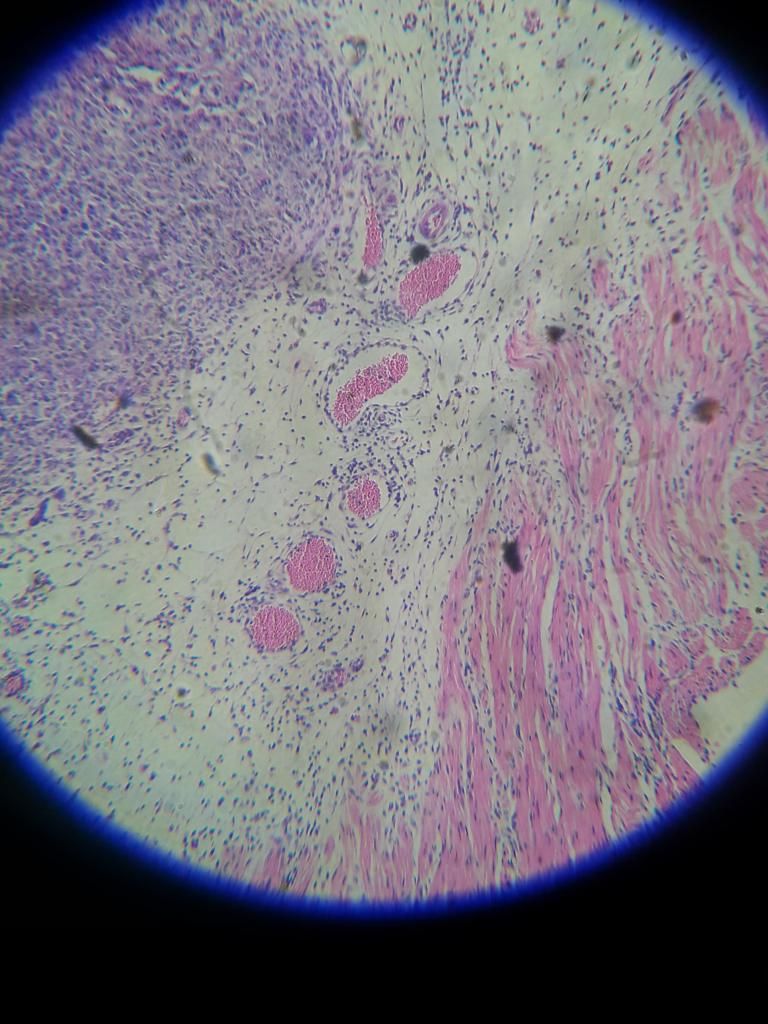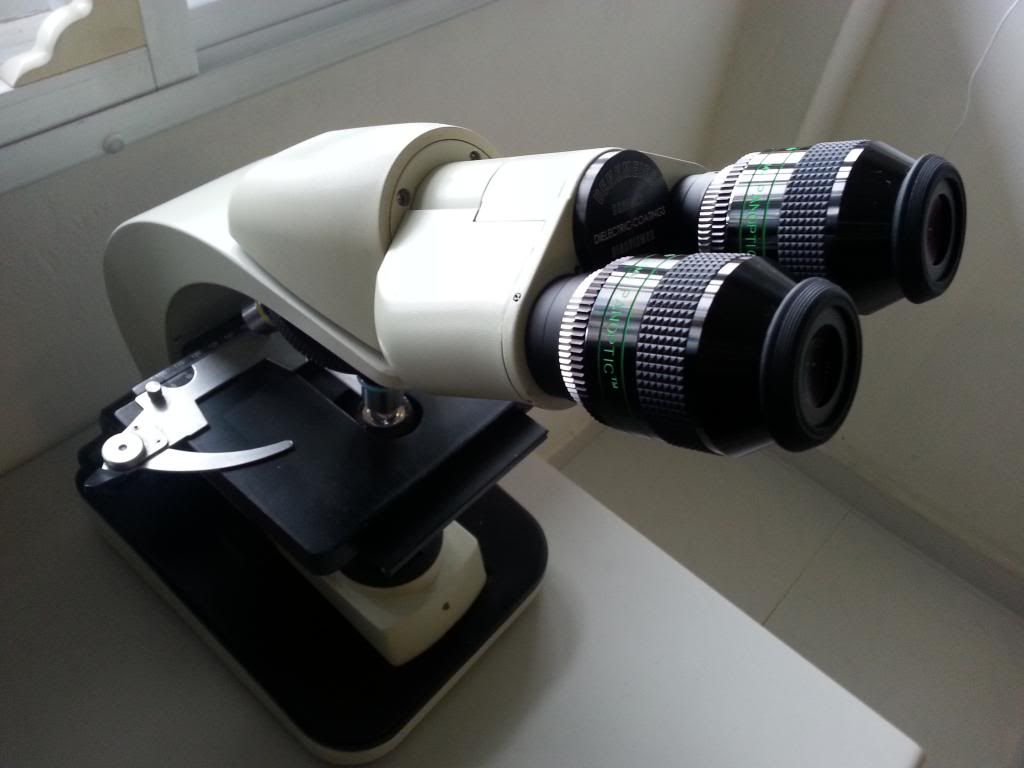
The story began with the purchase of a used Denkmeier Deep Sky Binoviewer from an overseas seller. It turned out that one of its prisms is fogged up. It may be moldy, but I cannot be sure. I decided to open up the binoviewer to clean the prism. As this was my first time doing so, I was really taking a risk. I wasn’t sure which screws were holding which parts together. Since the prism refused to budge, I ended up loosening more and more screws. Then … the prism suddenly decided to take a leap of death. It landed on its edge against the mosaic floor, damaging a crucial portion. It is difficult to describe my feeling at that time. But a good analogy is flushing a stack of cash down the toilet bowl.
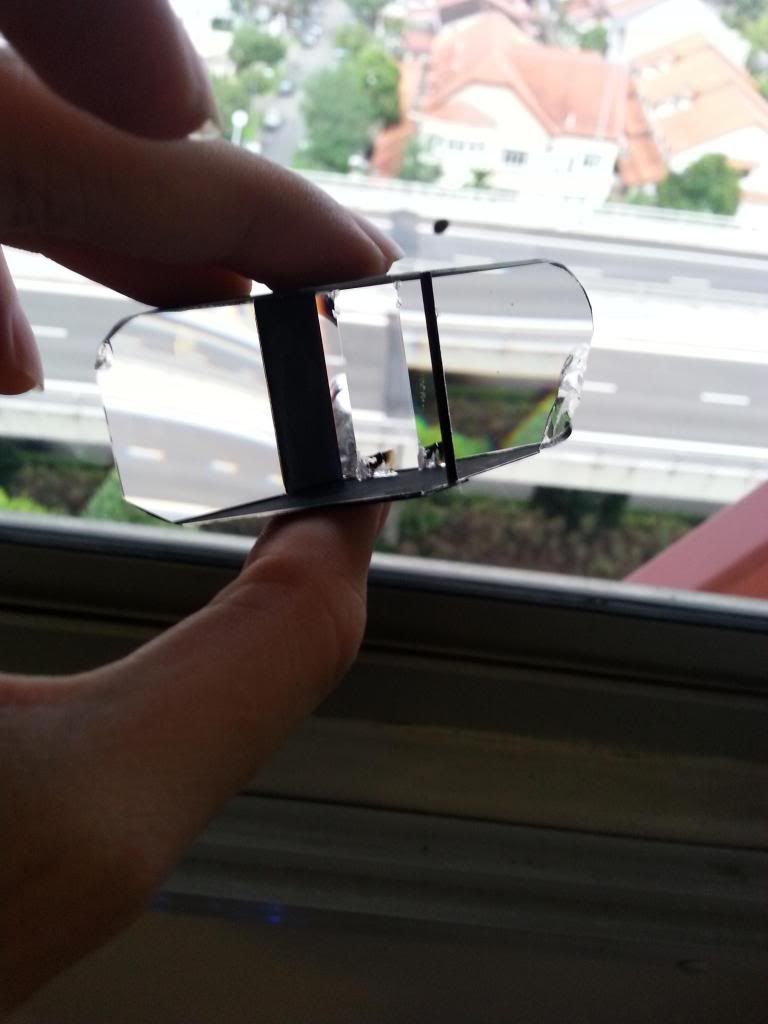
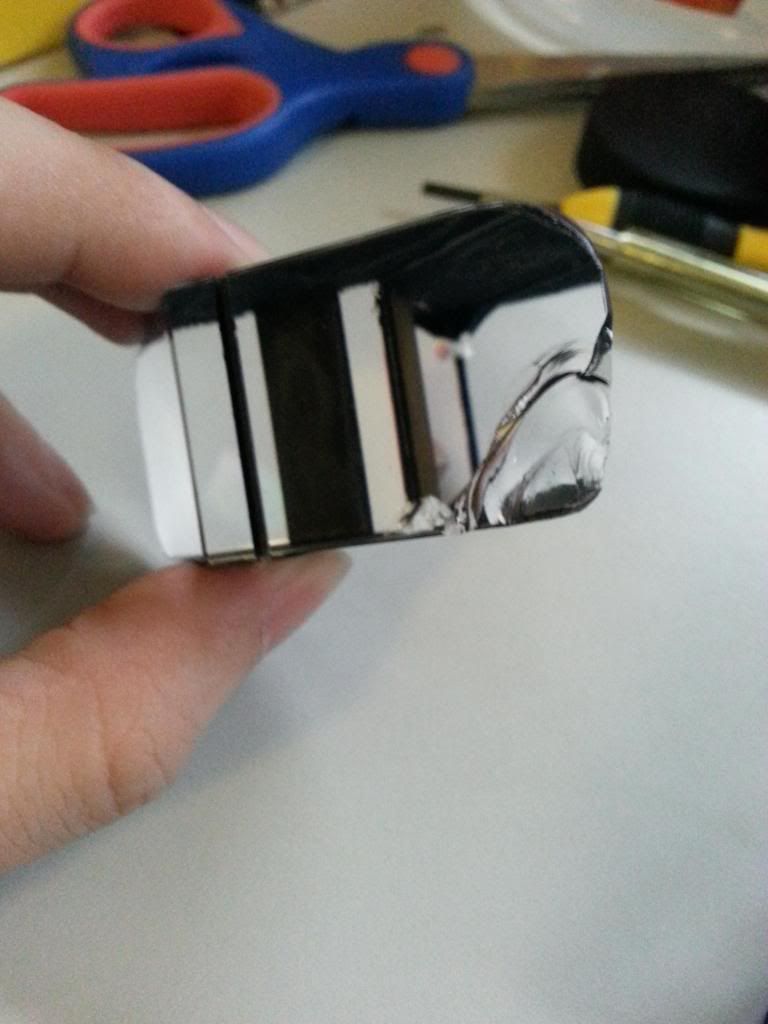
Before seeking a permanent fix, I decided to clean the damaged prism and put it back into the binoviewer. I was hoping that somehow, miraculously, the damage does not manifest itself in actual viewing. Maybe the cracks would be out of focus so that I cannot see them. As we all know, optics is sometimes very weird (see for example http://www.scopereviews.com/page1aa.html).
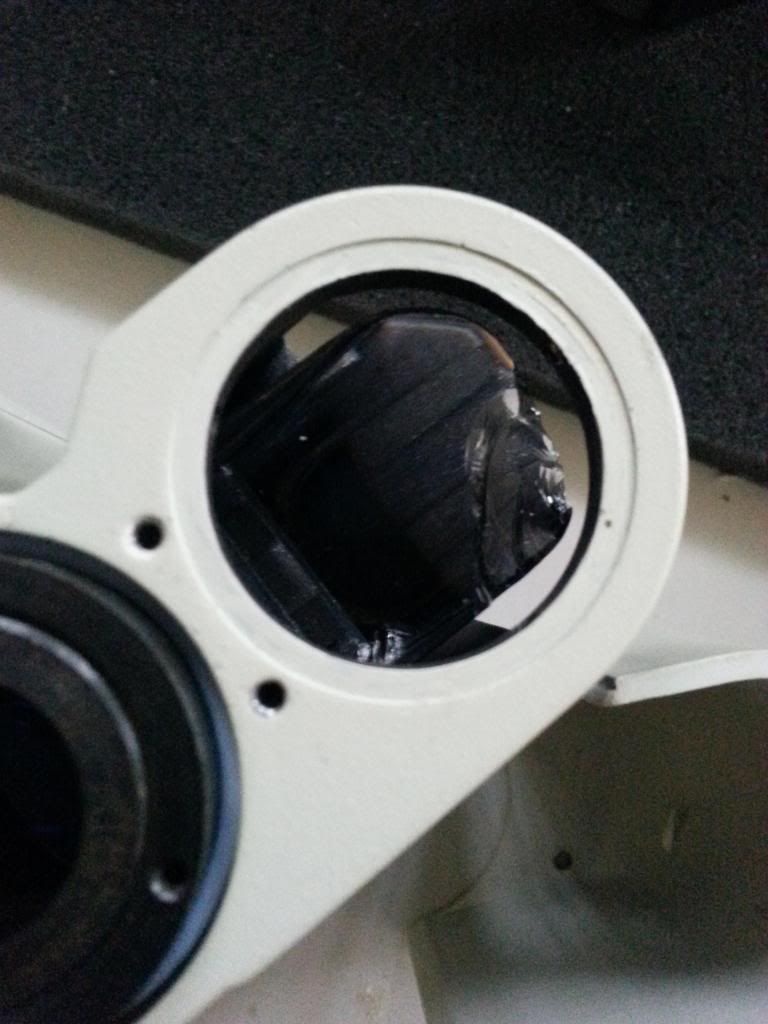
I did a daytime test. The damage did manifest itself … especially when using wide FOV eyepieces. Fortunately, it does not affect viewing with high power, narrow FOV, eyepieces. Only the middle part of the prism, which is undamaged, is needed to illuminate the high power eyepieces. So while the binoviewer is no longer suitable for viewing the moon, it does well for planets. It is a consolation …
I e-mailed Denkmeier to ask if I could purchase a replacement prism. I received a reply a couple of days later telling me that there is no replacement prism as this binoviewer model has been discontinued. But I was asked exactly which prism was damaged, which lead me to believe that there is still some hope in salvaging the situation [EDITED]. I sent over some pictures, and ...... there has been no reply since. [EDITED OUT]. This is now looking like a dead end ...
I posted wanted ads in the classified sections of two prominent astronomy websites, hoping that someone has a broken binoviewer for parts to spare. There was no luck. But one concerned individual e-mailed me to inquire about my situation. He said that Denk is obliged by law to have spare parts for 7 years. How true this is I don't know. While I study law, my speciality is animal law (but even animals may sometimes come into contact with a binoviewer ... read on).
I searched the Internet for suitable replacement prism but to no avail. However, by luck, I stumbled across a posting in a forum saying that the Denk binoviewer is actually based on a converted microscope head of Chinese origin [EDITED]. [EDITED OUT] I was more interested in a possibility of salvaging my damaged binoviewer. If I can purchase a used microscope of that model cheaply, I could extract a replacement prism from it (provided I don’t drop it again!). Luckily, this particular model of microscope is on sale on ebay.
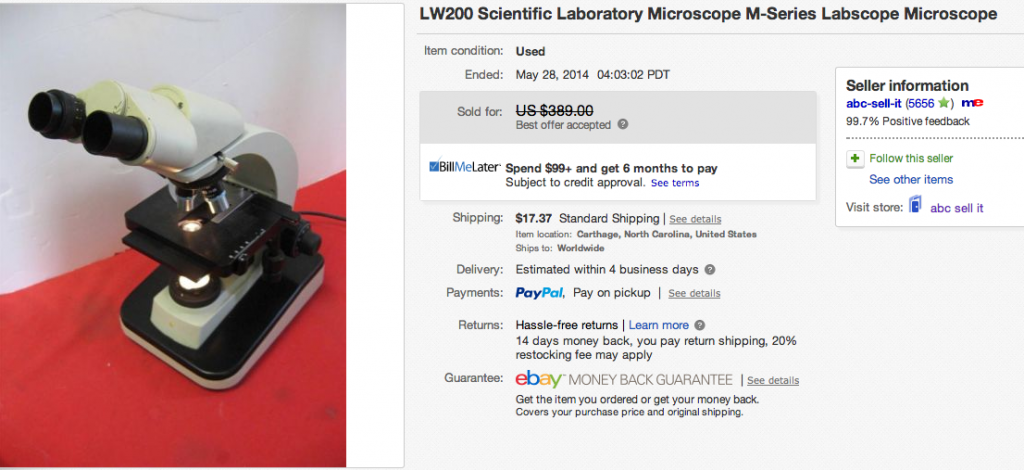
I made an offer to buy the microscope at a much lower price than the list price. Surprisingly, it was accepted! However, as the entire microscope is very heavy, the shipping cost turned out to be a bomb. Oh well … do I have a choice? I received the microscope 2 weeks later.
The microscope head was easily removed from its body. They were secured together using three screws.


I could immediately see the close resemblance between this and the Denk binoviewer.
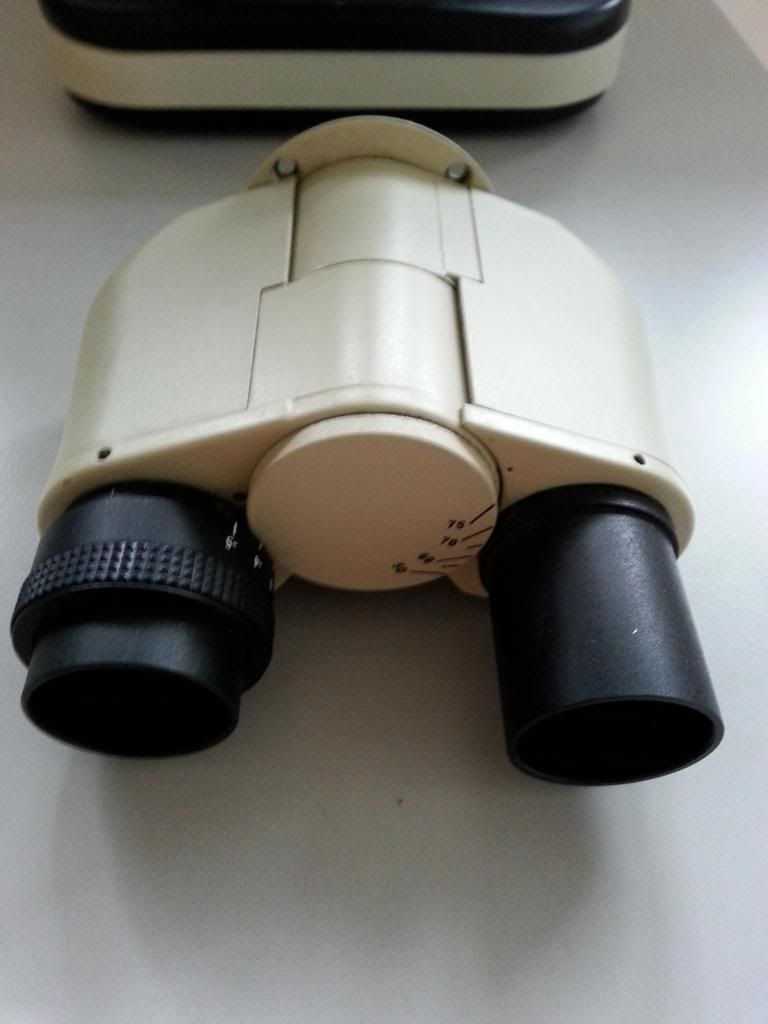
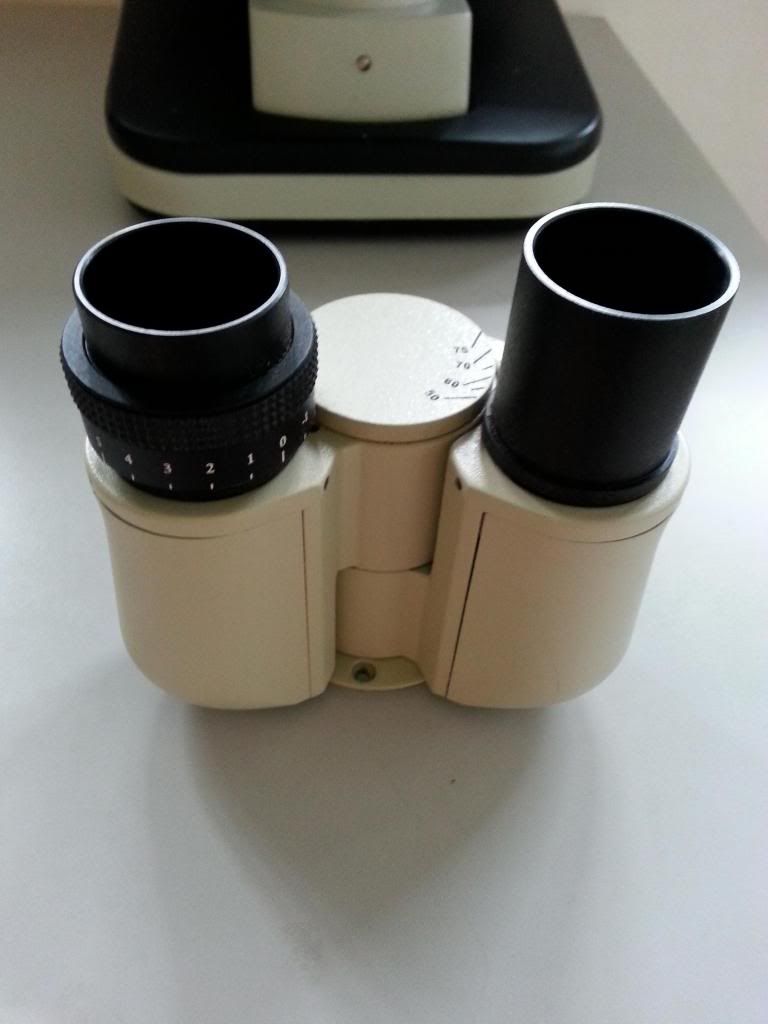
I turned the microscope head over and examined its bottom. It turned out that a Denk 1.25” nosepiece readily screws into it, just like how it screws into the bottom of the Denk binoviewer.

What I could have done is to simply use the microscope head as a replacement binoviewer. Although the microscope head accepts only eyepieces with slightly smaller barrels, I could simply replace them with the Denk’s eyepiece holders. I know exactly how to do this. But one concern prevented me from doing the full swap. Denk boasts to have dielectric coatings on their prisms. I cannot be sure about the microscope prisms. I suspect they are either uncoated or has inferior coatings. If I replace only the damaged prism in the binoviewer, at least one prism with superior coatings remains.
Hence I proceeded with the original plan. I was extremely careful this time. If this prism decides to jump off the table like its cousin, I would have thrown the whole microscope and the binoviewer down from 14th floor. They must be cursed!
To remove the prism, only a few screws need to be loosened.
(1) Remove the side cover by loosening 2 screws located at the bottom. This will allow access to the prism.
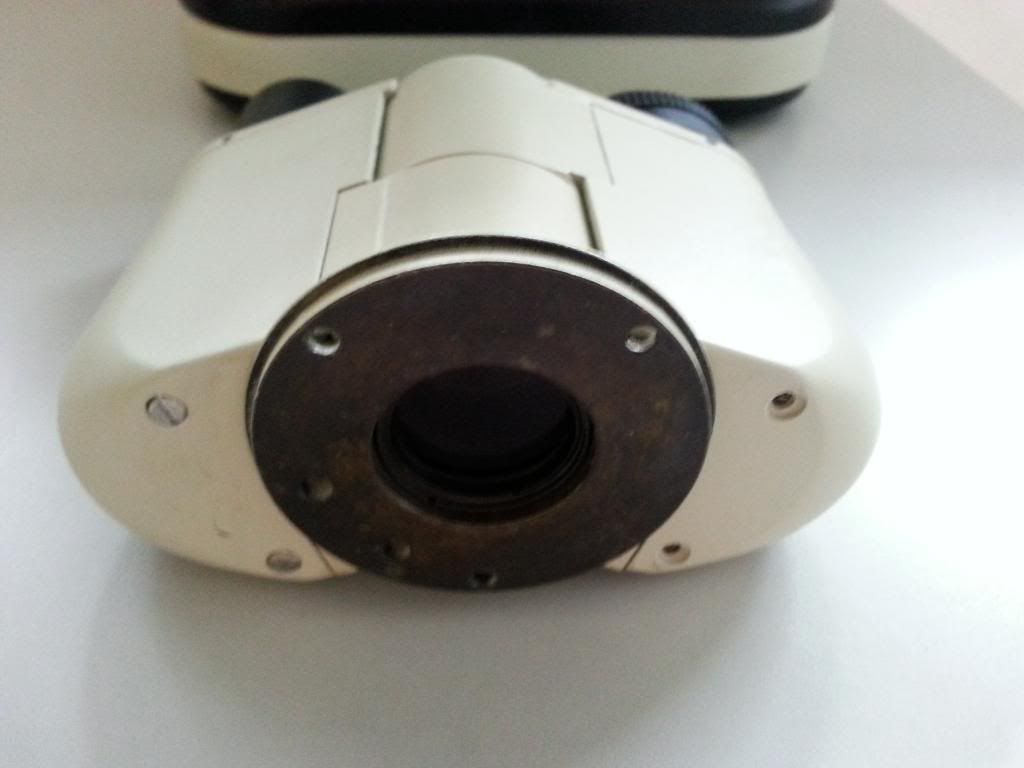
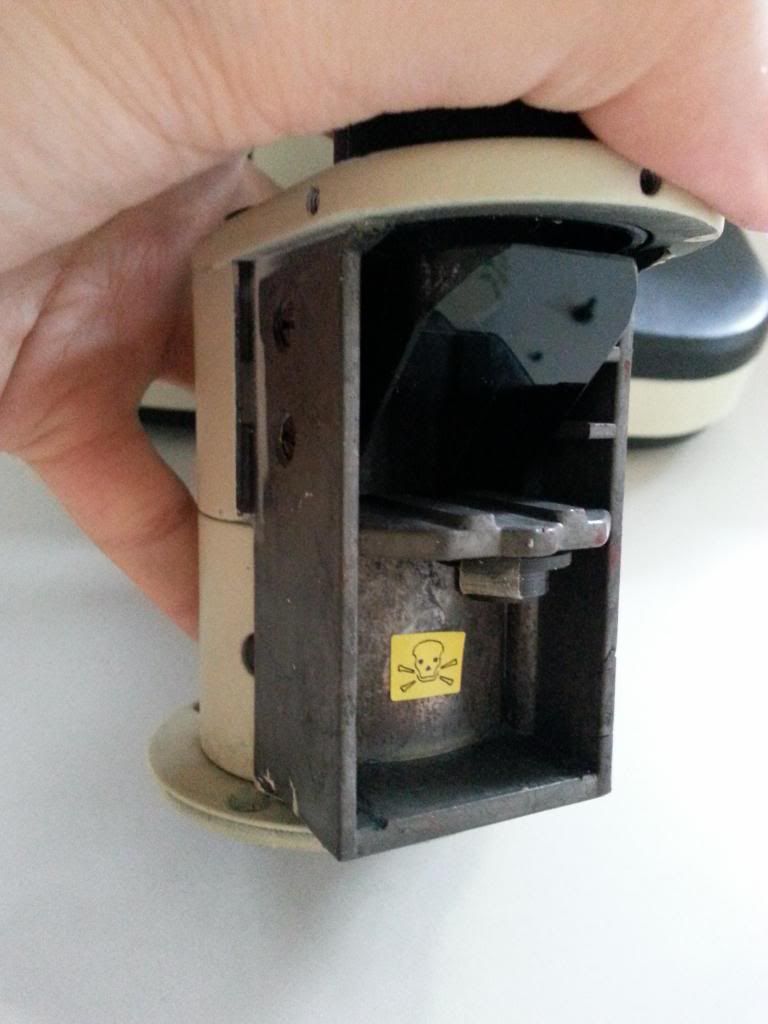

I don't (want to) know what those skull stickers is warning against. It appears in both the microscope head as well as in the Denk binoviewer.
(2) Loosen the screws that are holding the prism. There are 4 screws - 2 large ones on the side, 2 small ones on the top. Hold the prism so that it doesn’t jump off!



(3) Repeat the same steps with the Denk binoviewer. They are exactly the same.
The prisms are almost exactly the same, except perhaps the coatings applied to them.
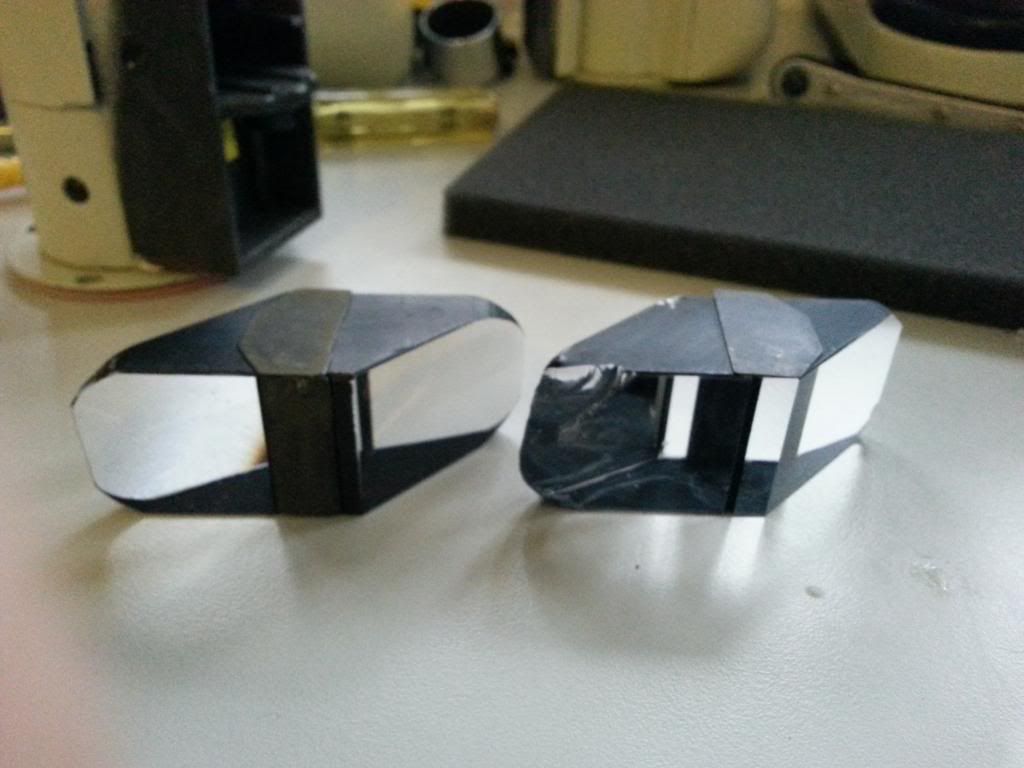

For those of you interested in technical specifications, Denk claimed that this model offers 26mm clear aperture.
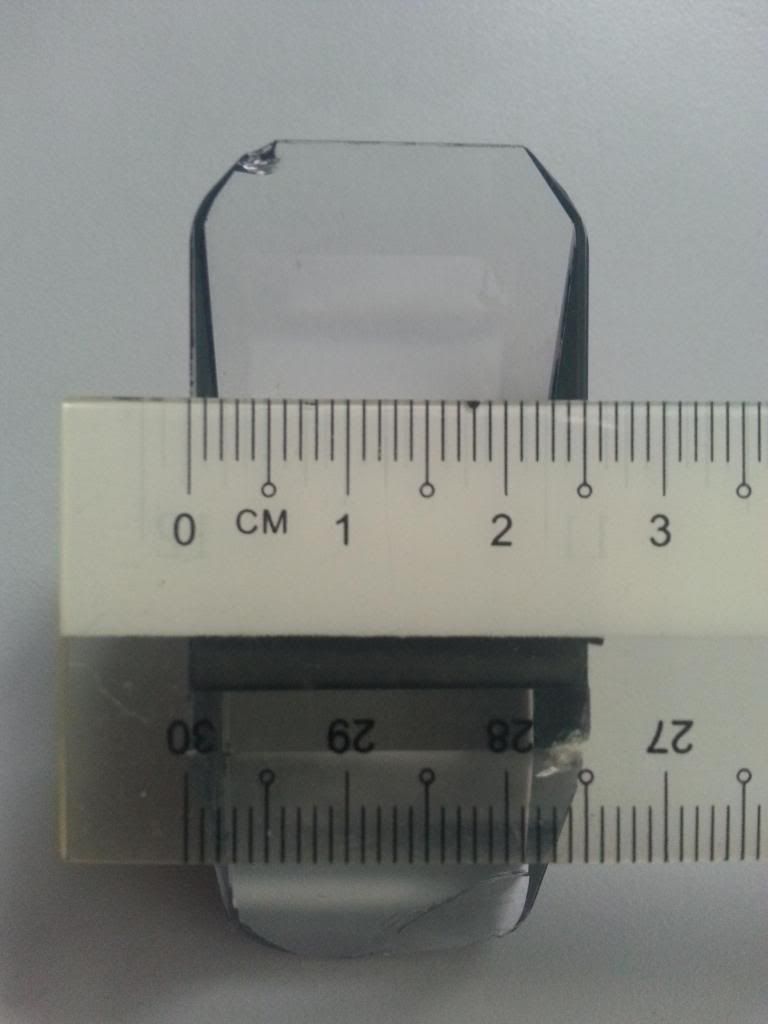
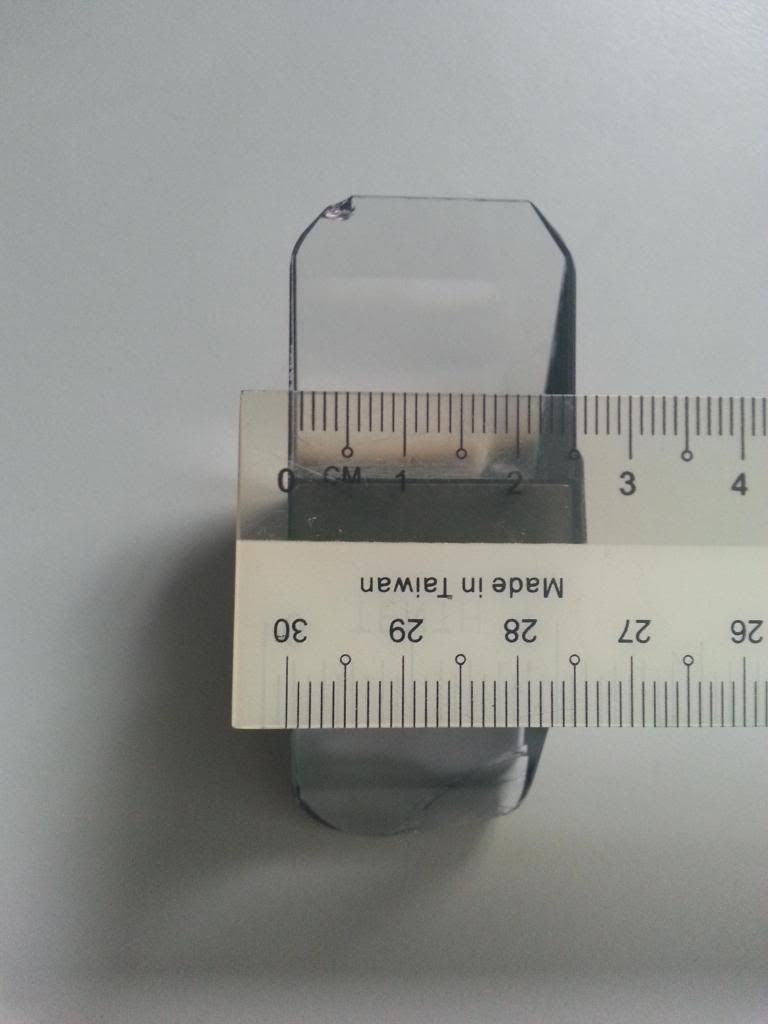
I think 25.5mm is closer to the real number. But it’s just 0.5mm difference. I don’t care!
Now all I have to do is to clean the microscope prism and put it into the Denk binoviewer ~ carefully. All went well … phew! I did a daylight test. The side that is illuminated by the microscope prism appears to be a bit bluish and slightly darker. This may be due to difference in coatings. But once the images are merged, there is no issue. Test at night does not reveal any perceivable difference (to me, at least) in brightness and contrast between the two sides. The repaired binoviewer works perfectly! I was greeted by Messiers 7 through 25. They all look spectacular through the binoviewer with a pair of Televue Panoptic 24mm!
As a footnote, I don't think meddling with the prism affects collimation. So long as it is in its proper place and secured by the 4 screws it should be fine. I don't see any way of fine-adjusting the positions of the prism using those 4 screws. Instead, collimation is achieved by adjusting the positions of the eyepiece holders so that the object used for collimation appears in the middle of both eyepieces.
On a separate note, one may ask whether it is worth it to purchase the microscope just to extract its prism. Even before its arrival this has been on my mind. Let us rewind the story. Before I started on Operation Prism Replacement, I thought of an idea. Could I attach a repaired Denk binoviewer to the microscope body? If I could, the microscope would not go to waste.
As explained earlier, the microscope head is attached to its body using three screws. The bottom part of the Denk binoviewer, however, is slightly different. A metal plate is fitted at the bottom to cover the screw holes.
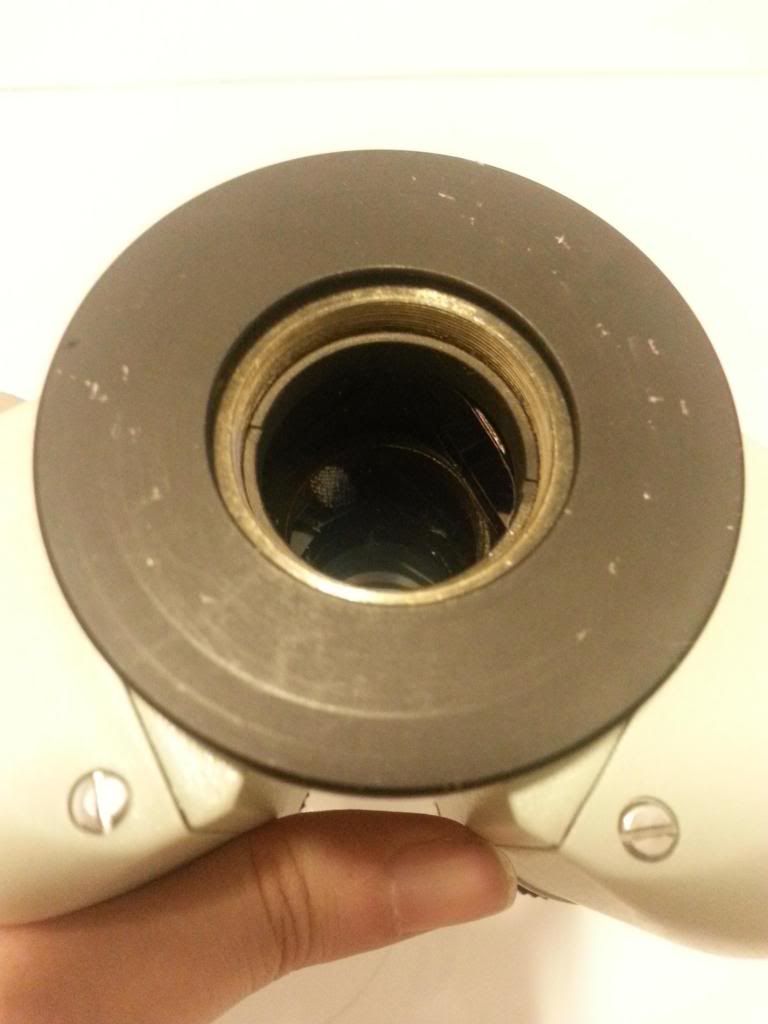
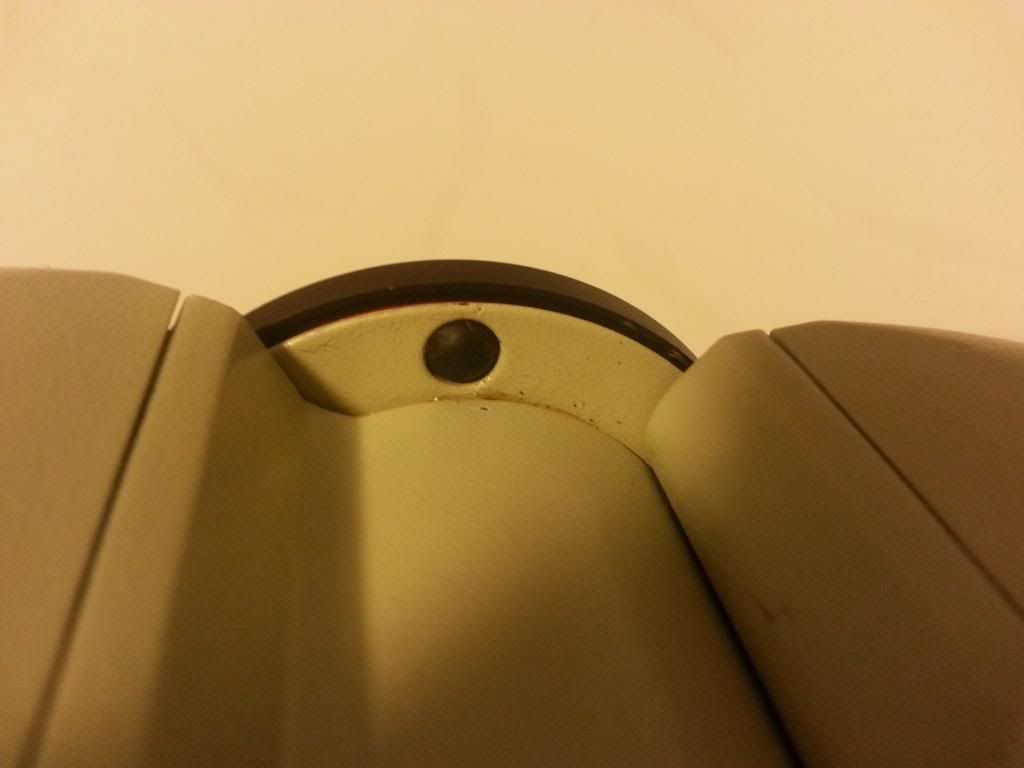
If I could remove the metal plate my plan would work. But it was stubbornly secured by some adhesive. I gave it quite a bit of knocking and it finally gave way! The three screw holes needed to attach the binoviewer to the microscope body were revealed!
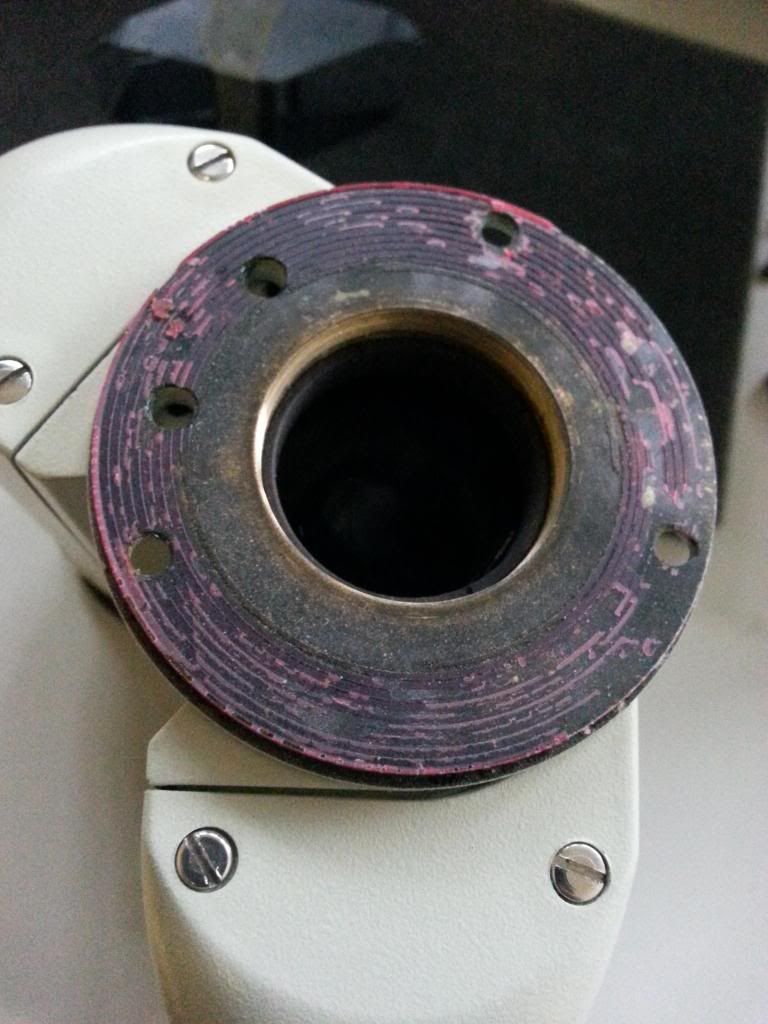
And hence the birth of MicroDenk!
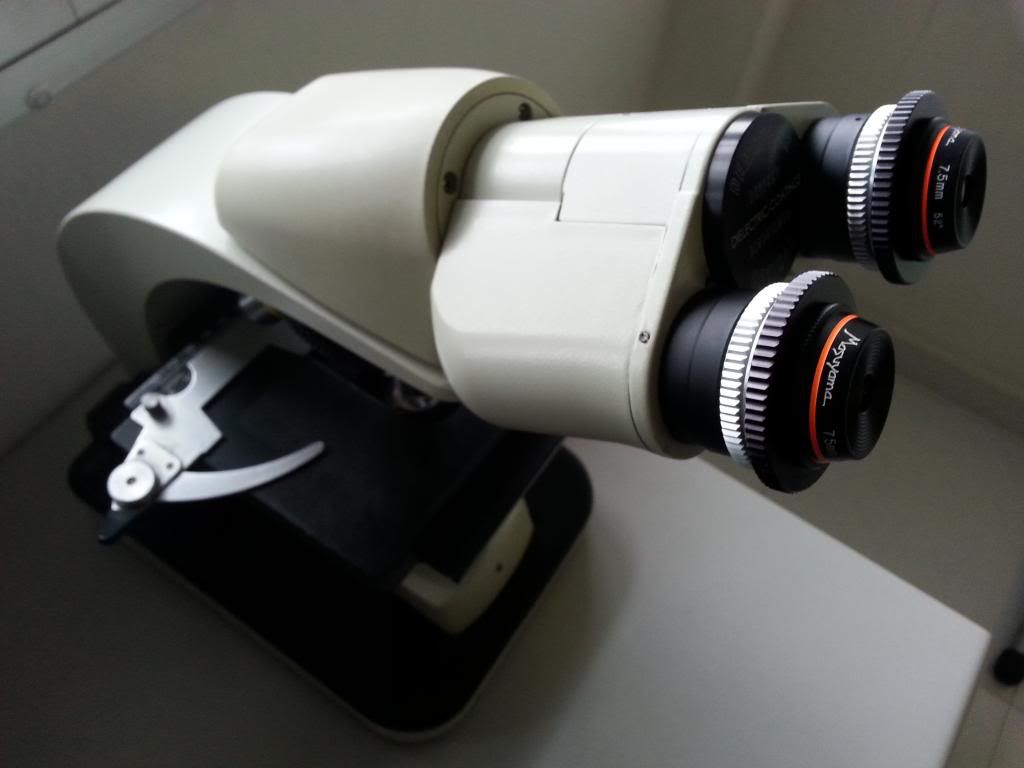
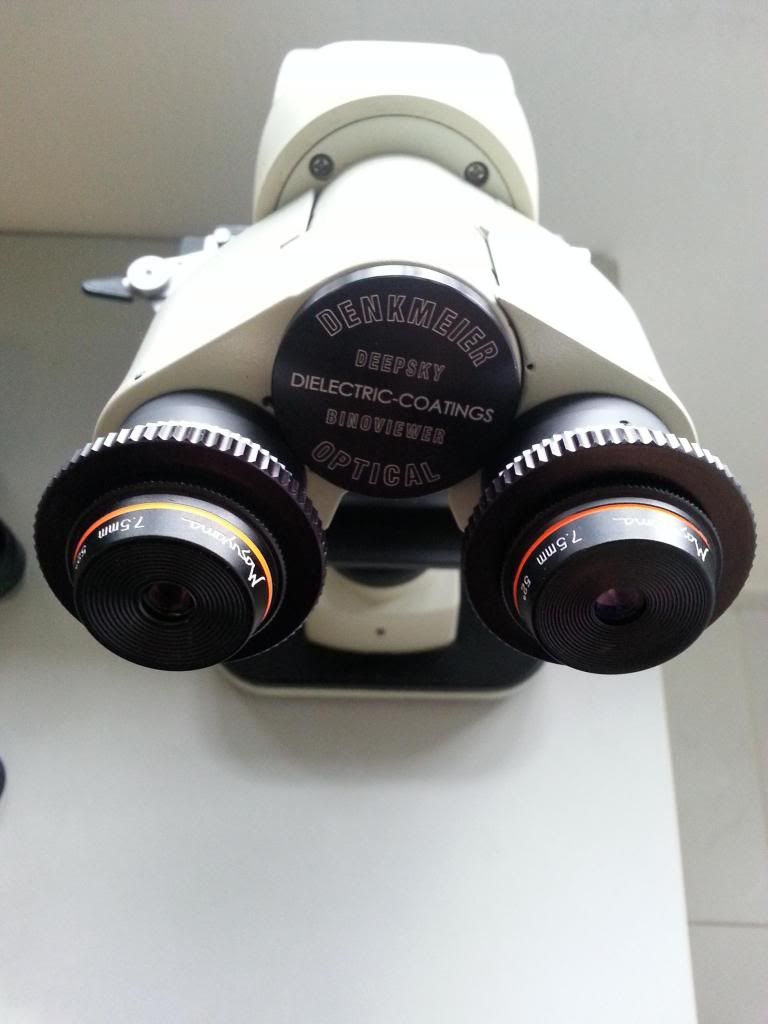


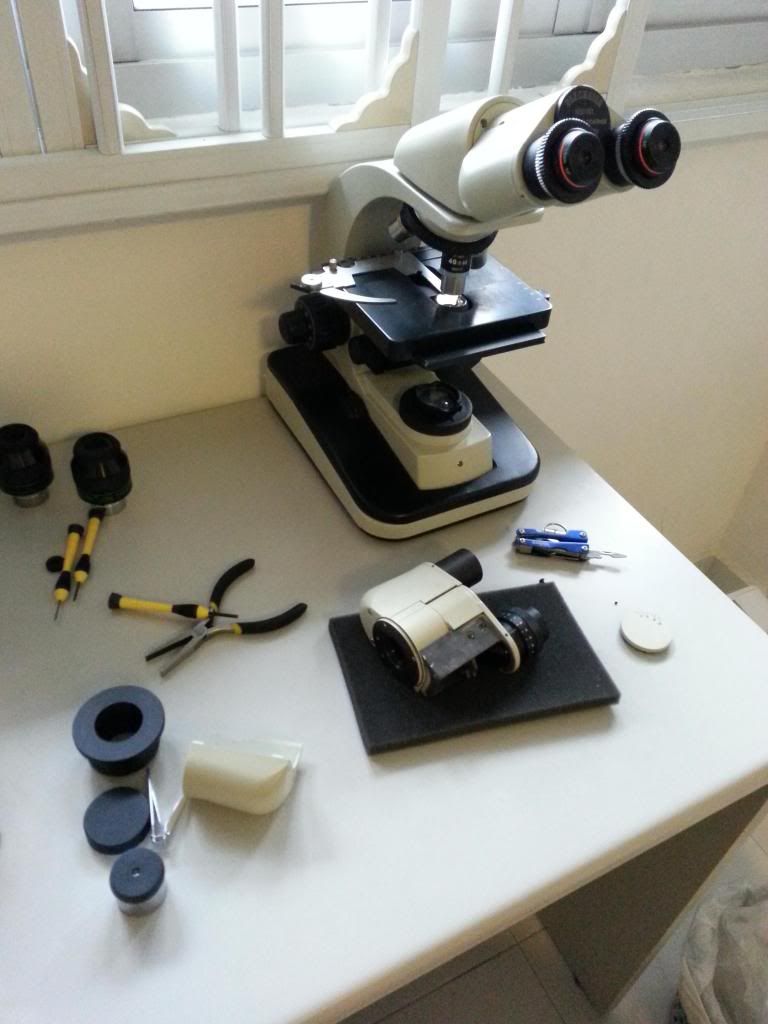
I was told that I might be the first person to look through a microscope with a pair of Televue Panoptic. This might be true, but I cannot be sure. More importantly, it works! I used the MicroDenk to look at a piece of Copal (fossilized tree resin) with insects inclusion (I told you animals may sometimes come in contact with a binoviewer). Here are some pictures taken through one of the eyepieces.
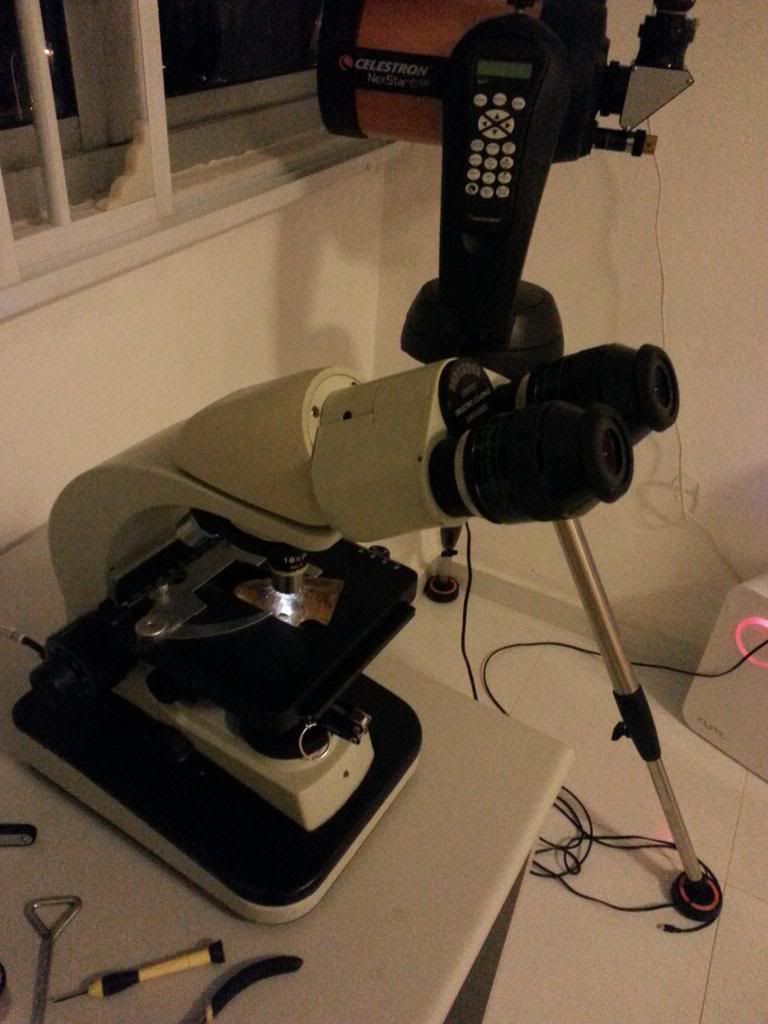
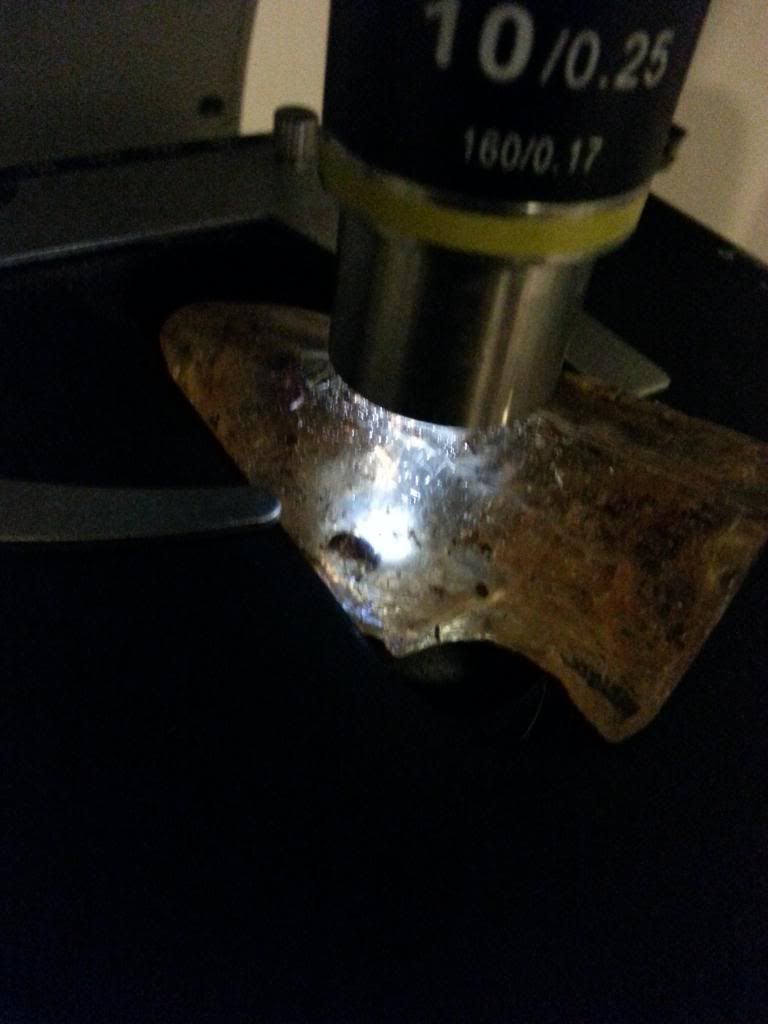
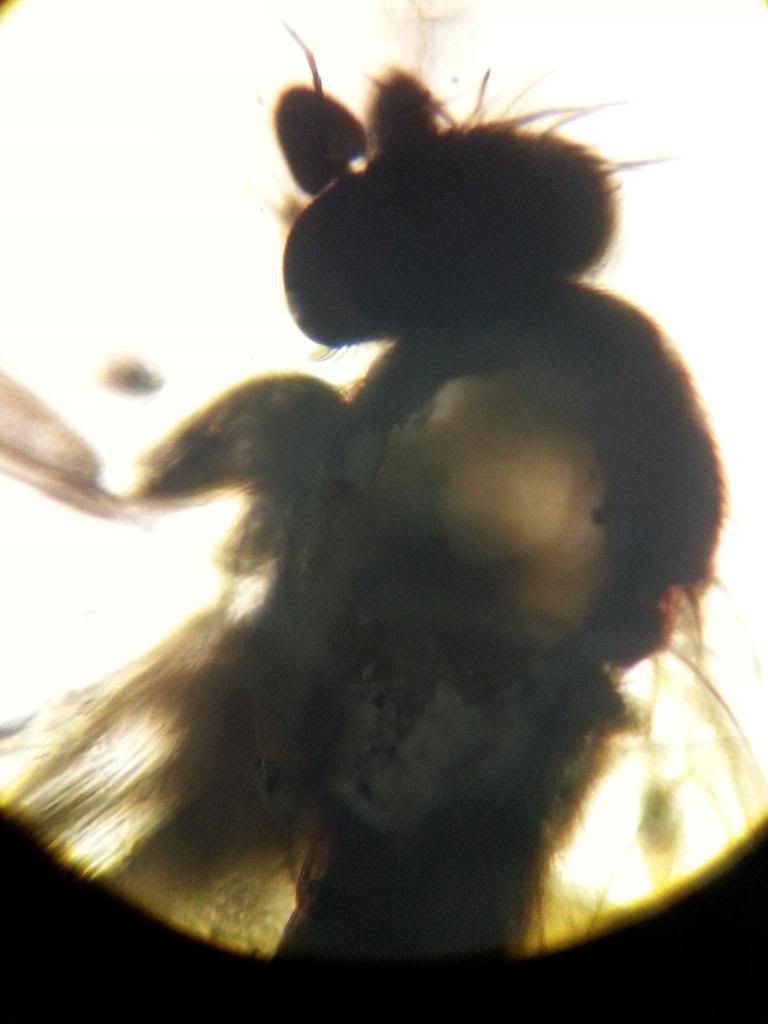


Swapping between microscope mode and astronomy mode is simple enough. It’s just a matter of attaching or removing the 3 screws and the nosepiece.
The unfortunate beginning ended with a happy note (some may call this a comedy). Since I now have the option of using the microscope, which I often do since the sky is always cloudy, it is worth the cost of purchasing it. If the Denk binoviewer had came without problem, none of these adventures would have taken place. I’m now a happy owner of the MicroDenk!
I hope you enjoyed reading this. Let me know if you have any questions. Thanks!
Alvin
![good-job [smilie=good-job.gif]](./images/smilies/good-job.gif)



